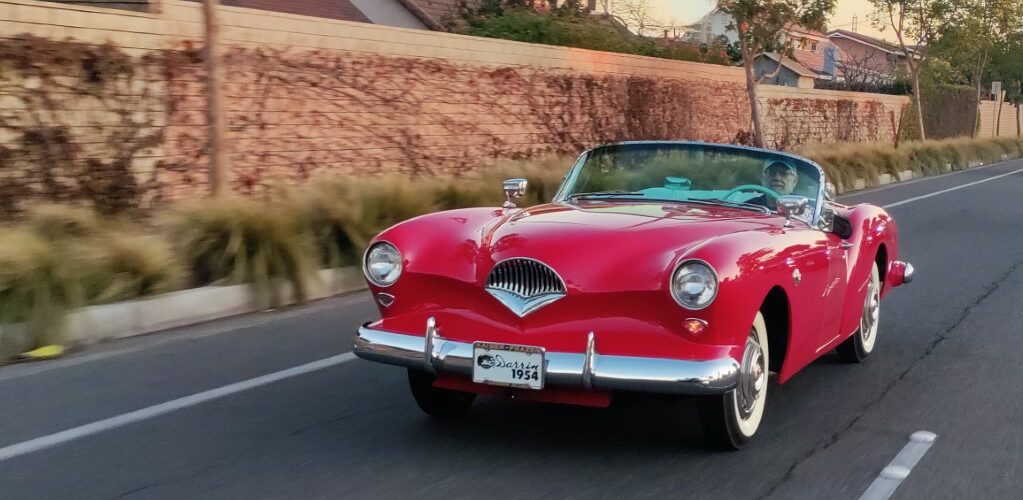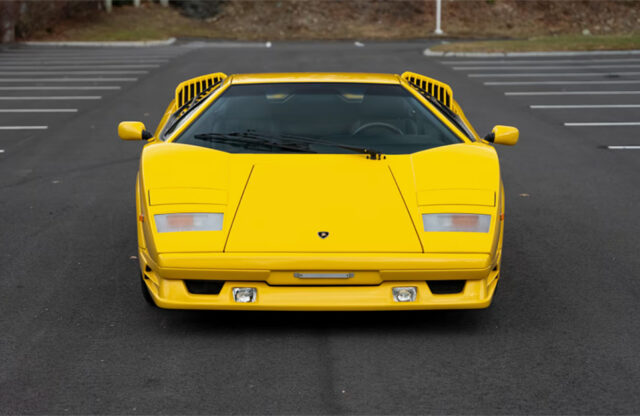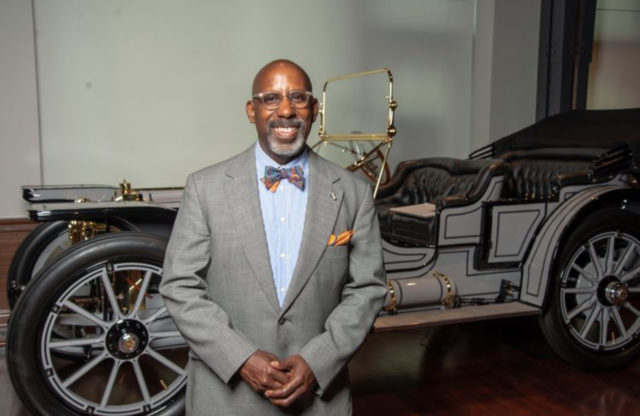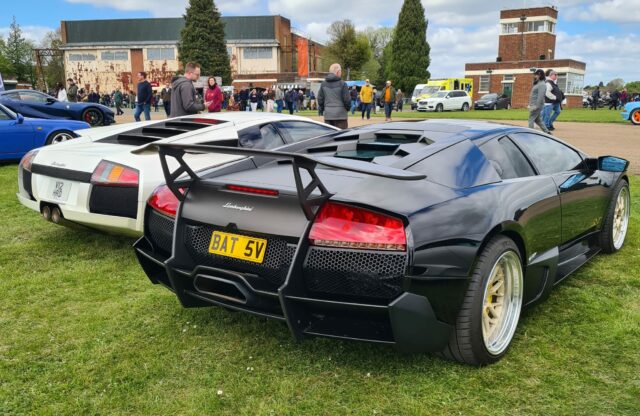WORDS AND PHOTOS: RICHARD TRUESDELL
Post-war America was a period of unbridled optimism. Of all the major powers, only the US suffered no significant physical damage – unlike the warring nations of Europe and Asia.
When GIs were stationed in Europe – especially in England, Germany, France and Italy – they were exposed to a kind of car not offered domestically either before the war or after. These were small, lightweight (compared with typical American cars), two-seat sports machines. And the GIs wanted their own. This was addressed by home-built specials, or very low-production cars often sold as kits, such as the 1952-1958 Woodill Wildfire that featured an innovative glassfibre body from boat builder Glasspar.
The mainstream domestic manufacturers saw this emerging market trend and worked to address it. First on the scene was the Nash-Healey, a transatlantic collaboration between America’s Nash-Kelvinator and England’s Donald Healey Motor Company. Next up was the Kaiser Darrin 161, a glassfibre-bodied two-seater built on the chassis of the Kaiser-Frazer Henry J compact. This was followed by Chevrolet’s Corvette, and finally by Ford’s Thunderbird – a more luxurious interpretation of the two-seat theme.
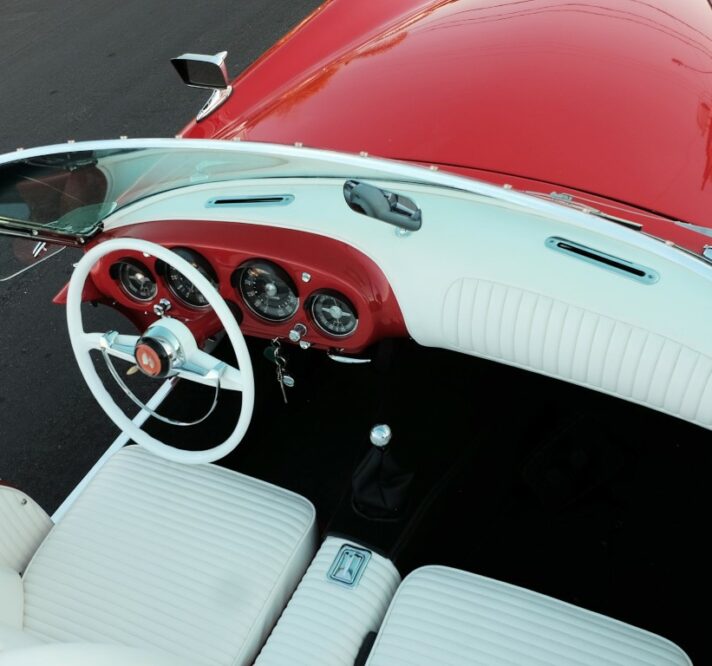
The Kaiser Darrin was cutting edge in several additional ways, especially when compared with its most direct competitor, Chevrolet's Corvette
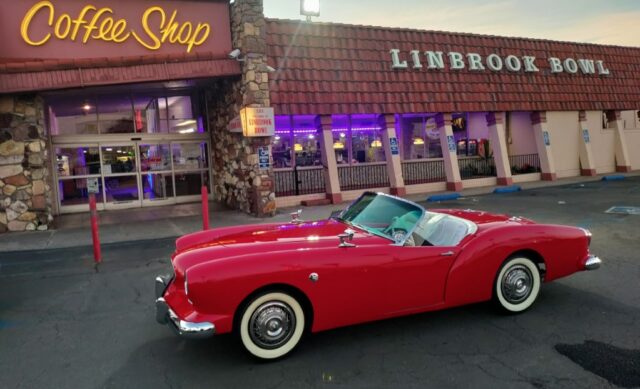
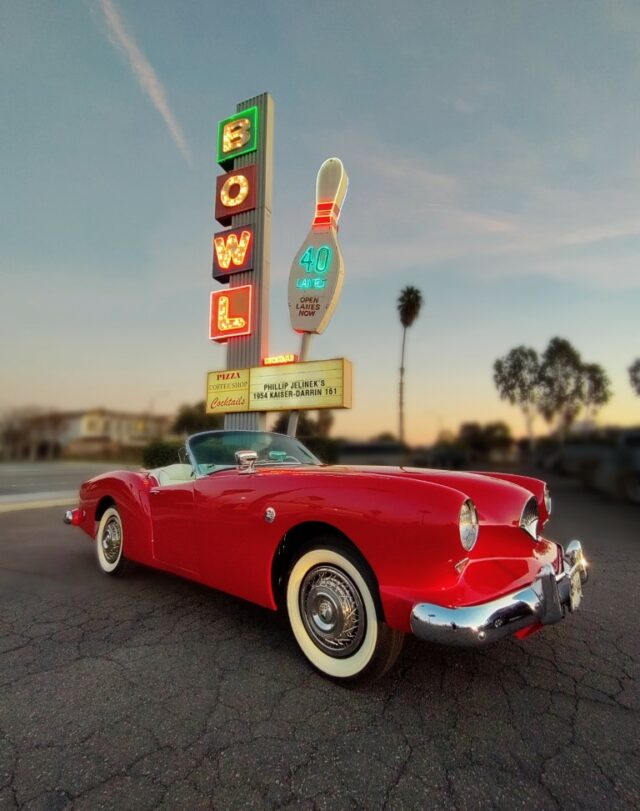
But of the four the Kaiser Darrin 161 may have been the most interesting and innovative, for several reasons. The three people primarily responsible for the creation of the 161 included industrialist Henry J Kaiser, veteran auto executive Joseph Frazer and designer Howard ‘Dutch’ Darrin.
Henry J Kaiser is best known for his Kaiser Shipyard in Richmond, California. Kaiser could build a Liberty transport ship in just 45 days. Kaiser could build ships faster than German U-boats could sink them.
Following World War Two Kaiser teamed up with Graham-Paige auto executive Joseph Frazer, to form the Kaiser-Frazer Corporation in 1945. The two combined to produce a series of innovative passenger cars, which were among the first all-new automobiles introduced in the US following the end of the conflict.
Coming along with Frazer was designer and coachbuilder Dutch Darrin, who had made a name for himself before the war with a series of well regarded custom-bodied luxury cars, primarily Packards. Darrin returned to America from his Paris base in 1939, setting up a new home in Hollywood. He started freelancing for Graham-Paige, thus his connection with Joseph Frazer and thus the Kaiser-Frazer Corporation.
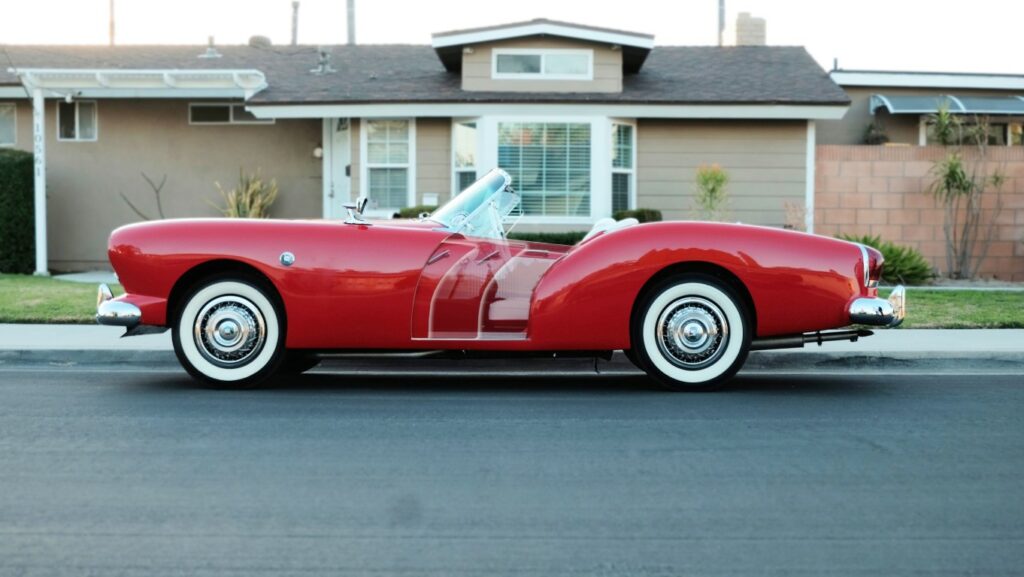
In 1951, Darrin started work on what would become the Kaiser Darrin 161. His design for the upcoming Henry J compact had been rejected, but knowing the mechanical layout of the upcoming model, Darrin felt it deserved better styling. Pulling ideas such as his previously patented sliding doors (from his first aborted sports car design) that retracted into the front fenders, he started work on what would become the Kaiser Darrin 161. It would be a two-seat roadster on a Henry J chassis, initially powered by a flathead six-cylinder engine. The styling featured the ‘Darrin Dip’ in its side profile, a feature that was a hallmark of his previous coachbuilt efforts.
Darrin worked outside of Kaiser-Frazer’s Willow Run factory, and his clandestine project initially escaped notice by Kaiser, who was not pleased when he learned of it. But thankfully Kaiser’s wife liked the proposal, along with Darrin’s good friend and yacht builder Bill Tritt (a founder of Costa Mesa, California-based Glasspar, who is often given co-credit for the design). Eight prototypes were built by Glasspar, with their introduction at September 1952’s Los Angeles Motorama auto show predating the arrival of the 1953 Chevrolet Corvette by one month. This made the Kaiser Darrin, not the Corvette, America’s first glassfibre sports car. One of those initial prototypes included an innovative retractable hard-top, but this did not make it into production.
The Kaiser Darrin was cutting edge in several additional ways, especially when compared with its most direct competitor. The use of glassfibre allowed Kaiser – as well as Chevrolet – to tool up for production for a small fraction of what it would have cost to produce the bodies in steel.
Yet the 161’s most unique feature was its sliding doors that retracted into the front fenders. Darrin had been working on this innovation since the late 1940s, and finally received a patent in 1953 just before the start of series production.
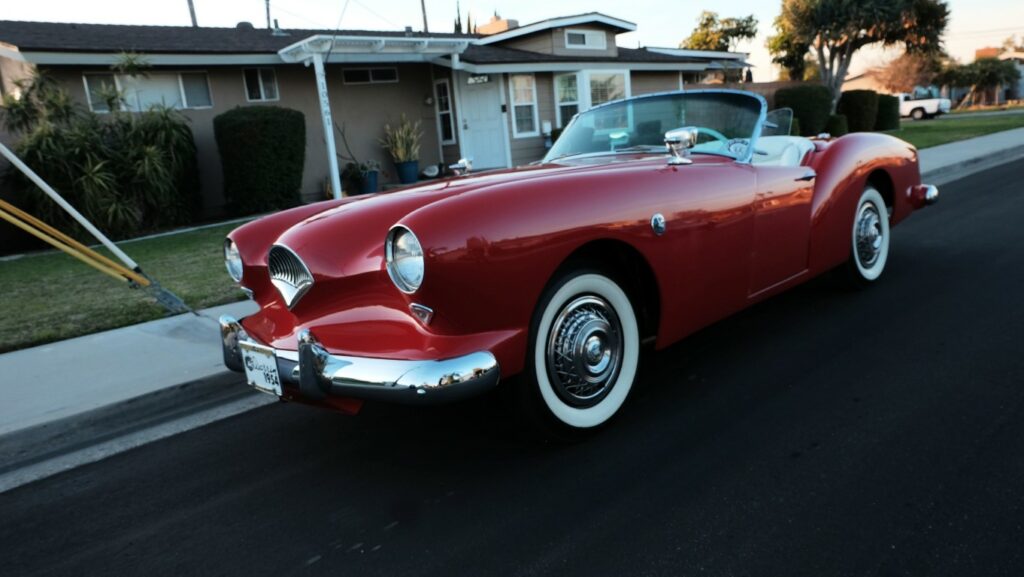
The three-position top was another innovation. This functioned as a conventional convertible top either up or down. An intermediate position was also offered, however, open to the sky above the passenger compartment but remaining up above the deck. This gave owners the appeal of open-air motoring while reducing wind buffeting at speed.
But there was one innovation that the Kaiser Darrin never got full credit for. The Corvette (and the Ford Thunderbird that followed) were conventional front-engined cars with the motor positioned over the centreline of the front axle. The Kaiser Darrin, meanwhile, featured a front-mid-engined configuration with the powerplant placed completely behind that centreline. In this regard, the 161’s layout had more in common with a Ferrari 340 America roadster than with any of its domestic competitors.
With its 90bhp 161ci (hence the name) Willys F-head six-cylinder engine set back further in the Henry J-supplied chassis, it provided near-perfect 50:50 weight distribution. So instead of the typical nose-heavy handling characteristics of the early Corvette and Thunderbird, the Kaiser Darrin boasted much more neutral handling characteristics.
Ultimately the production Corvette came to market almost a year before the Kaiser Darrin. With its 1953 introduction, only 300 of the Chevrolets were sold. The Kaiser Darrin, meanwhile, would premiere for a short 1954 model year, with a total of 435 examples leaving the factory.
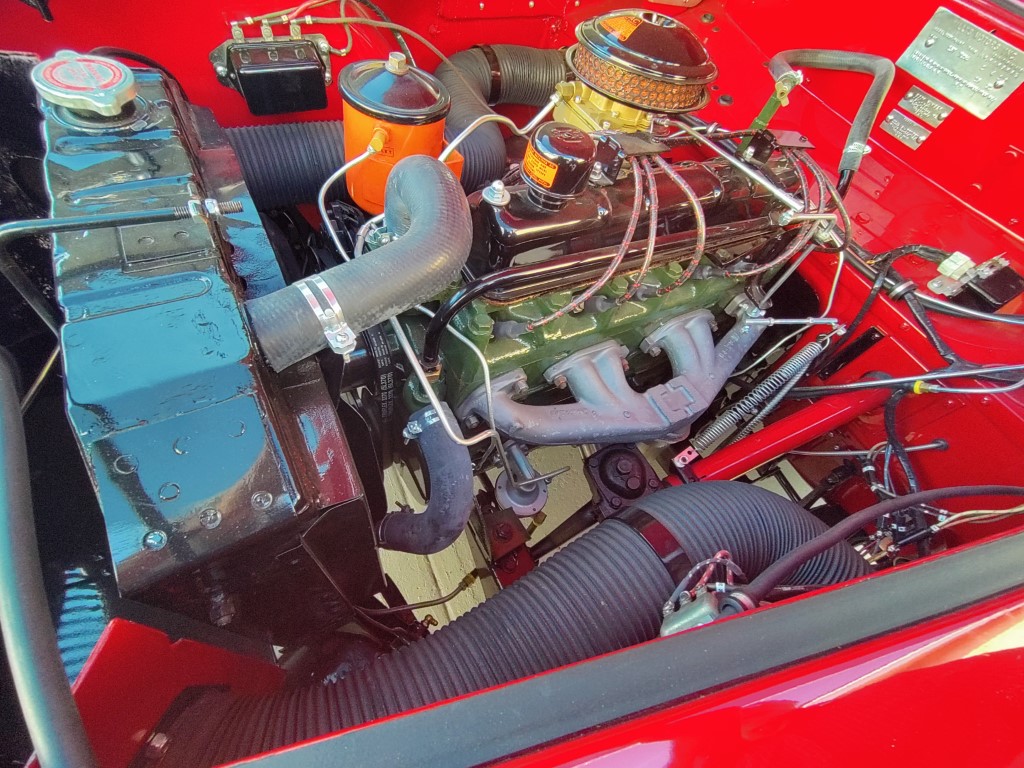
To broaden its product portfolio, in 1953 Kaiser acquired the Willys-Overland Company. This was producing its own small car, the Willys Aero, as well as the Jeeps it had pioneered during World War Two. But the firm was losing money, making it a takeover target for Kaiser.
Even with the Jeep acquisition and Kaiser’s impending exit from the US automobile market, the Kaiser Darrin was simply too specialised to be produced elsewhere. This was apparent given that European manufacturers such as Jaguar and Triumph in England, as well as Porsche and Mercedes-Benz in Germany (along with several smaller, specialised manufacturers in Europe), had the emerging two-seat sports car market well covered. The last Kaiser Darrin rolled off the assembly line in June 1954.
The car had a life after its official death, however. A freak snowstorm in Toledo damaged 50 examples. Kaiser sold these units to Darrin at a very attractive price, since the latter owned some patent rights to the 161’s design. The remaining cars, with new bodies, were outfitted with a variety of engines in Darrin’s Hollywood facility between 1955 and 1957.
There is another lasting legacy to the Kaiser Darrin. Henry J Kaiser went on to found many successful companies and businesses before his passing in 1967, including Kaiser Aluminium. But his most lasting legacy is the Kaiser Permanente healthcare system, which to this day remains one of the largest HMOs (health maintenance organisation) in the US.
